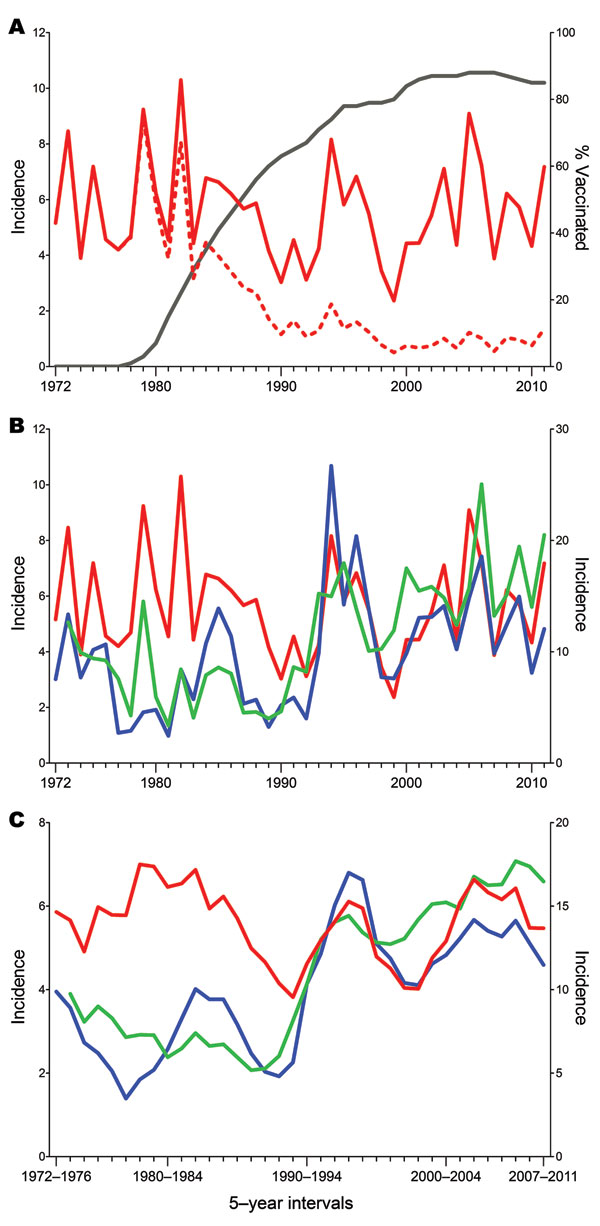Volume 19, Number 1—January 2013
Research
Vaccination and Tick-borne Encephalitis, Central Europe
Figure 1

Figure 1. . . Tick-borne encephalitis (TBE) incidence rates, 1972–2011, central Europe. A) Total population (red dashed line) and nonvaccinated population (red solid line) in Austria. The black line represents the increasing coverage of vaccination, which started in 1978. B) Comparative representation of TBE incidences in Austria (red line), Czech Republic (green line), and Slovenia (blue line). The incidence scale for Slovenia (right y-axis) differs from that of Austria and the Czech Republic (left y-axis). C) Sliding-window representation of TBE incidence in Austria (red line), Czech Republic (green line), and Slovenia (blue line) in means of 5-year intervals. The incidence scale for Slovenia (right y-axis) differs from that of Austria and the Czech Republic (left y-axis).